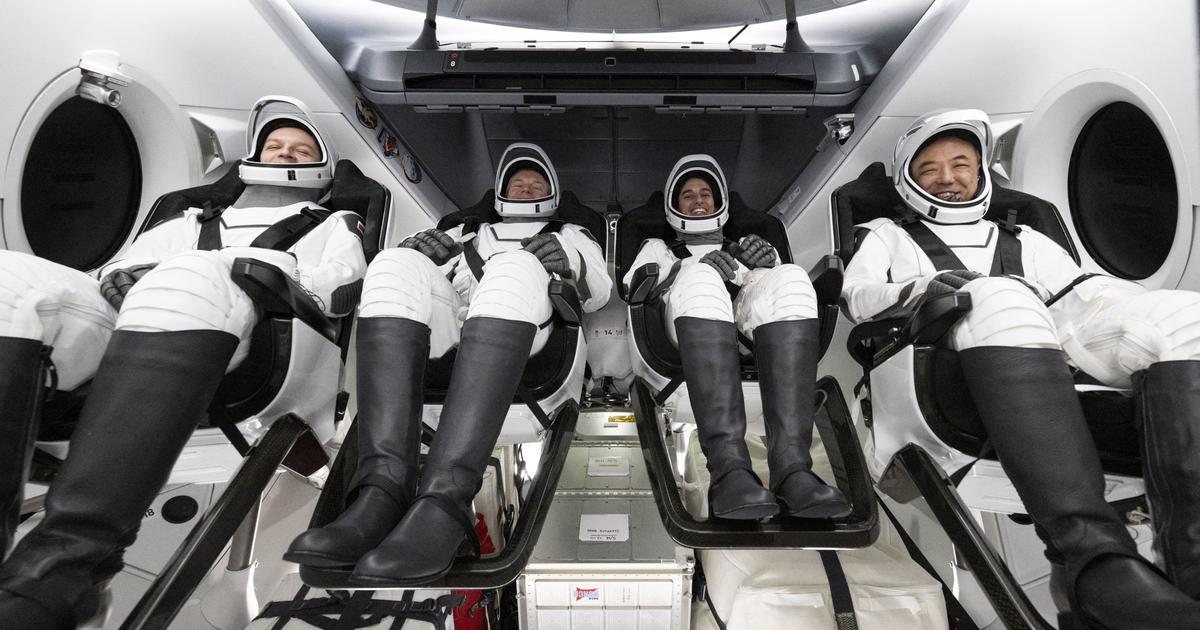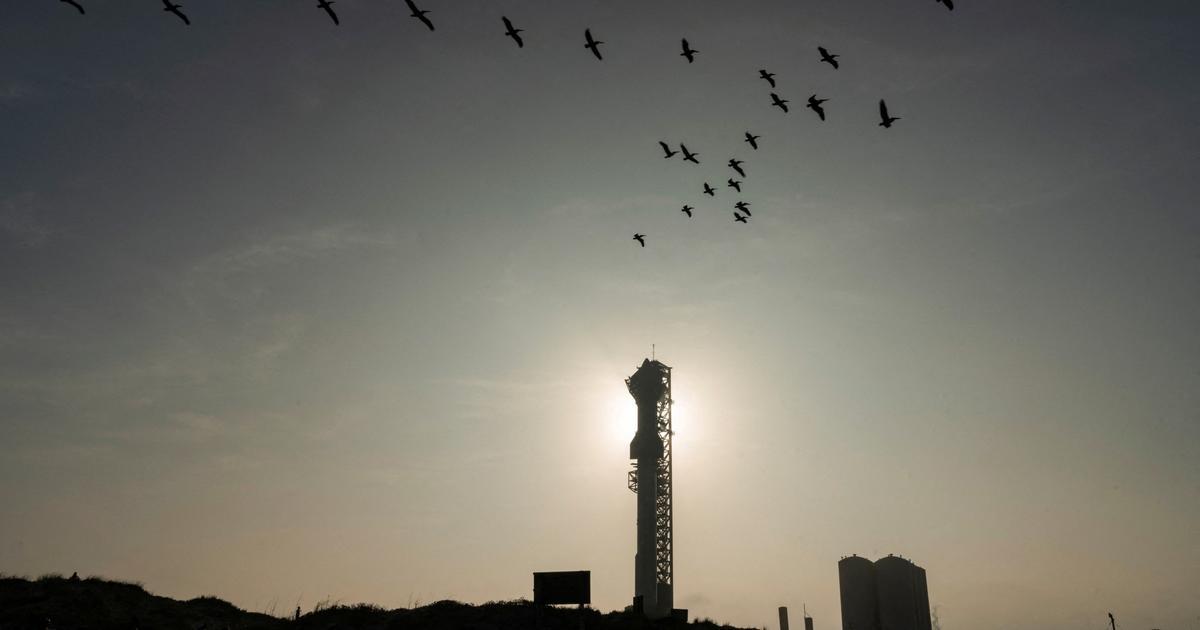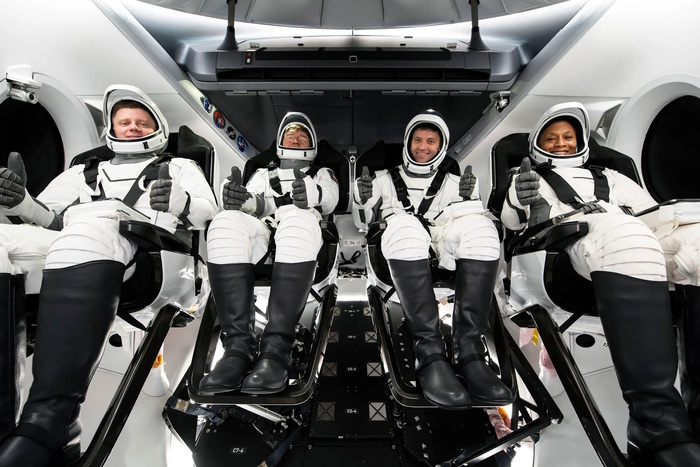- Click to share on Facebook (Opens in a new window)
- Click to share on Twitter (Opens in a new window)
- Click to share on LinkedIn (Opens in a new window)
- Click to email a friend (Opens in a new window)
Historic launch of SpaceX and NASA 1:13
(CNN Business) - When Elon Musk founded SpaceX in 2002, the company's assigned goal was to bring humans into space.
Now that NASA astronauts Robert Behnken and Douglas Hurley have arrived on the International Space Station (ISS), Musk can breathe a sigh of relief because his company's Crew Dragon spacecraft and Falcon 9 rocket performed successfully. during the mission this weekend. SpaceX can now officially be considered the first company to send humans into orbit aboard a privately owned spacecraft.
READ: US astronauts disembarked from SpaceX's Crew Dragon and boarded the International Space Station
But it's not over yet. Critical weeks of technical and safety reviews of the spacecraft lie ahead before NASA officially designates Crew Dragon as an "operational" vehicle. Then, another Crew Dragon spacecraft must be ready for the next mission, called Crew-1, which will take four more astronauts to the space station: NASA astronauts Victor Glover, Michael Hopkins, Shannon Walker, and Soichi Noguchi of Japan.
NASA hopes to launch Crew-1 in August.
The mission that Behnken and Hurley started over the weekend will not be considered a success until they safely return to Earth, but their mission is expected to last up to 110 days, and the journey home will be as dangerous as the journey to the orbit.
Crew Dragon's debut, however, is an important milestone for SpaceX and NASA, and the mission was one of the biggest points both organizations had to cross off the list before moving on to more ambitious goals.
Access to the International Space Station
The United States has not launched its own astronauts into space since the Space Shuttle program ended in 2011. Since then, NASA astronauts have had to travel to Russia and train on the country's Soyuz spacecraft. Those seats cost NASA up to $ 90 million each.
READ: Historic SpaceX and NASA Manned Mission: Everything You Need to Know
But the space agency decided not to create its own replacement for the shuttle. Instead, it asked the private sector to develop a spacecraft capable of safely transporting astronauts to and from the ISS, a controversial decision considering that NASA had never before outsourced the development of a spacecraft for the transfer of humans. Companies were thought to be able to cut costs and drive innovation, and NASA would have more time and resources to focus on exploring the solar system more deeply.
In 2014, NASA awarded two contracts: one of $ 4.2 billion to Boeing to build its Starliner vehicle and one of $ 2.6 billion to SpaceX, which planned to create a version of the Dragon spacecraft that was already moving cargo to and from the ISS that could carry a crew. NASA had already put up money for SpaceX's development of the Dragon spacecraft used to transport cargo, and the space agency has said Boeing received more money because it was designing the Starliner from scratch.
NASA astronauts Bob Behnken and Doug Hurley walk towards the Falcon 9 rocket to depart for the International Space Station on May 30, 2020 in Cape Canaveral, Florida (Joe Raedle / Getty Images).
Boeing recently suffered a significant setback when a Starliner capsule failed to function properly during an unmanned test flight. But if SpaceX can safely return Behnken and Hurley, it will be a great victory for NASA, which has been pushing for more partnerships with private parties.
Occasionally, delays in the development of the Crew Dragon and Starliner capsule have threatened to leave the American portion of the ISS understaffed.
But, after years of anticipation, the Crew Dragon capsules are ready to start making regular trips to and from the space station, allowing NASA to take more control over ISS personnel. The space agency hopes to have more hands on deck, creating more opportunities for scientific experiments and maintaining the station's operations.
Because the Crew Dragon program is technically owned and operated by SpaceX, the company can even explore opportunities to bring tourists or other non-astronauts into space.
Actor Tom Cruise, for example, is working with NASA to eventually shoot a movie aboard the ISS, the space agency says.
Tom Cruise and NASA will make movie in space 0:44Artemis: NASA's next lunar mission
NASA's ambitions extend far beyond the ISS, which orbits about 402 kilometers above Earth.
And last year, Vice President Mike Pence ordered the space agency to dramatically accelerate its plan to return to the moon's surface for years to come this decade. NASA is now pushing towards 2024 as the deadline.
SpaceX ended up being part of that effort, also called the Artemis Program. SpaceX proposed a new variant of its Dragon capsule, Dragon XL, that could transport the cargo to a space station that NASA planned to orbit around the moon. And last month, SpaceX was one of several companies chosen to develop lunar landers, or vehicles that can transport astronauts from NASA's Orion spacecraft to the lunar surface.
MIRA: Artemis, a small step for women: can NASA excite this generation to return to the Moon?
For the last task, SpaceX proposed using the Starship system, a company spacecraft and rocket that are in their early stages of development at facilities in South Texas.
Musk has spent a lot of time supervising that work in Texas lately. And the latest iterations of the Starship prototypes haven't survived long in the testing processes.
Starship's latest test object, called SN4, exploded during ground testing in Boca Chica, Texas, last week.
SpaceX's ambitions on Mars
Musk has hinted that SpaceX will invest significant resources in the development of Starship in the months and years to come.
The company is building a multi-billion dollar telecom business, Starlink, which SpaceX hopes will help finance the development of the Starship program, and continues to raise hundreds of millions of dollars from private investors.
Watch the most memorable moments in SpaceX history 2:49Starship's origin, after all, is not in NASA or its Artemis Program. Starship is at the center of SpaceX's founding mission to establish a colony of humans on Mars.
Technologically speaking, that milestone is probably still a long way from reality.
But Musk, speaking to reporters after the Crew Dragon launched on Saturday, reaffirmed his commitment to Mars as he celebrated Hurley and Behnken's safe departure.
“I am somewhat overwhelmed with emotion. Trying to find coherent sentences that make sense is pretty difficult, "Musk said, then added:" But I think this is, hopefully, the first step on a journey to civilization on Mars. "
Elon MuskNASASpaceX







